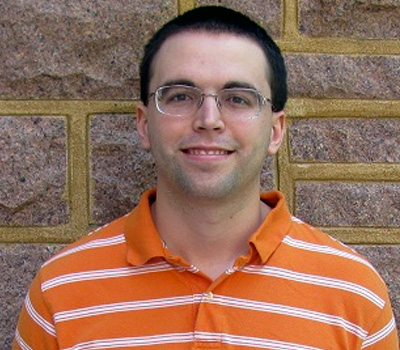Drawing inspiration from natural vision systems to improve medical optical equipment
Dr. Viktor Gruev is intrigued by medical research, a field in which he hopes his engineering background will help in potential breakthroughs. He has particular excitement towards the field of neuroimaging, which he believes is on the verge of great discoveries.
Nearly a billion years of evolution have led nature to develop a variety of complex and extremely efficient sensory systems. Dr. Viktor Gruev of Washington University in St. Louis realizes the advances natural systems boast and is working to draw inspiration from nature to develop more efficient and effective low-power integrated sensory systems. These imaging sensors integrate new nanomaterials with standard vision equipment, like a cell-phone camera, to create compact, ultra-sensitive imaging devices. These devices have both pre- and postoperative applications, and are typically attached a nano-meter thick to existent medical devices like endoscopes to give surgeons a wider range of visual capabilities before, during, and after surgeries.
Dr. Gruev has developed his sensory systems based on the inspiration from a variety of natural vision systems in the animal kingdom. With slight variations to the cameras and nano-cells, Dr. Gruev is able to specialize his equipment to perform functions that tackle multiple distinct medical issues. Leading research is concentrated on three vision systems:
-
Drawing inspiration from the visual system of the "mantis shrimp," which is able to detect 22 visual channels, Dr. Gruev has designed artificial material able to detect color, polarization and spectral information at high resolution in real time. The system uses nano-technology that is placed upon endoscopes or cell-phone cameras, similar to the way that nanoparticles are found on mantis shrimp eyes. This work is done in collaboration with marine biologists and is designed to image areas of the body, especially the colon, for cancerous cells.
In one study, mice are injected with human cancerous tissue. Cancer is noticed within a few days, and full-blown cancer develops within 2-3 weeks. These animals are monitored and imaged periodically using Dr. Gruev's technology, enabling the identification of cancerous cells before surgeons would typically be able to see them.
-
Studying the butterfly's vision system has revealed nanolayers that are capable of detecting different colors. The artificial sensory system is adjusted to allow for the mapping of near infrared spectrums and is then projected to a pair of compact glasses. Molecular dyes are used together with the bio-inspired camera to image cancerous cells. The location of these dyes, and therefore the location of the cancerous cells, is fed visually to the surgeon and is superimposed over the normal color image. This ensures successful removal of all cancerous cells, as well as the identification and removal of secondary tumors.
This technology has been utilized in 10 separate trials on human subjects and has ensured successful removal of all tumors in the patients' bodies. In most cases the vision system identified the presence of secondary tumors, which were removed during the initial surgery, eliminating the need for secondary surgeries.
-
Perhaps Dr. Gruev's most passionate project, his nanotechnology has allowed for visual screening of neural activity in the brain. Using a relatively non-invasive technique, light-interactions with the brain are observed to pick up how neurons are working inside the brain. This information will shed light on how information is processed in the brain and provide information on the early development of Parkinson's disease and other brain-degenerative diseases.
It is a commonly known fact that when dealing with cancer, the earlier tumors are detected the higher chances a patient has of survival; early detection of cancerous cells ensures a more positive health outcome for the patient. When operative surgery is required for a patient, it is crucial to ensure that all tumor cells are removed, eliminating the possibility for secondary tumors to develop. This not only increases the health of the patient, but waives the need for secondary surgeries, which will improve recovery time and lessen healthcare costs.
Neural applications of this technology will aid in breaking ground in a research field that is still wildly speculative. There has been much movement in the last 10-15 years, and understanding neural activity may provide answers about the development of diseases, prompting early intervention and cures.
Bio
Dr. Viktor Gruev completed his undergraduate studies at Southern Illinois University with a degree in Electrical Engineering. He continued on to study at Johns Hopkins University, where he received his M.S. and Ph.D., both in Electrical and Computer Engineering.
After completing graduate study, Dr. Gruev worked as a post-doctoral researcher at the University of Pennsylvania.
The multidisciplinary nature of Dr. Gruev's research works closely in collaboration with marine biologists, as he draws inspiration from vision systems of natural species. His technology is currently used in the Great Barrier Reef to image marine life in its natural habitat and understand their visual systems.
In the News
High-tech glasses may help surgeons visualize cancer cells, which glow blue when viewed through the eyewear
Flouorescent goggles have been used for the first time to help find malignant breast-tissue tumors


